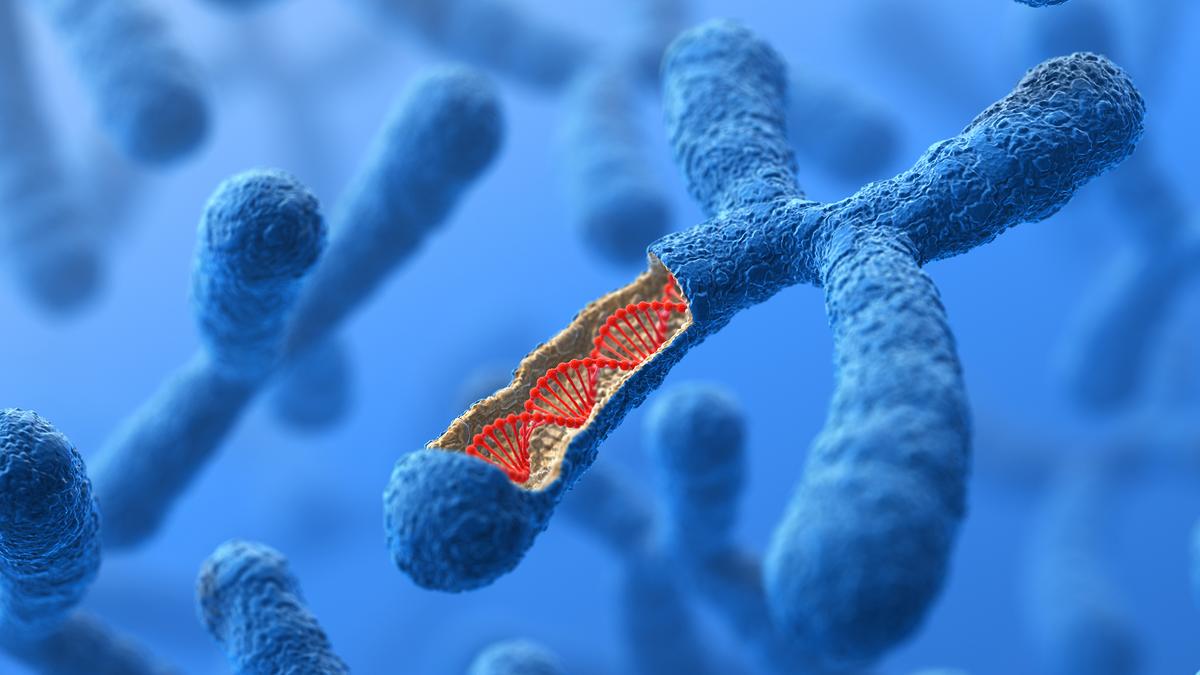
X chromosome revival in older women ups autoimmune disease risk Premium
The Hindu
The X chromosome's crucial role in genetic diseases, autoimmune conditions, and immune responses is explored in depth.
In mammals, the females have two copies of the X chromosome while the males carry a single copy. The X chromosome is more significant than for its role in determining sex. Recent genomic studies have shed light on the fundamental biological processes the X chromosome modulates and the genes it encodes. The gathering evidence suggests in fact that it plays a part in a variety of biological functions as well as controls the sex-specific susceptibility to certain diseases.
The human X chromosome encodes around 800 genes, which in turn code for proteins. A loss of function of these genes could thus lead to a variety of genetic diseases. Broadly, the diseases whose onset and/or progression the X chromosome influences can be grouped into three types: (i) X-linked genetic diseases, (ii) diseases influenced by XCI escape, and (iii) those linked to X-chromosome aneuploidy.
There are more than 500 X-linked genetic diseases , and they most affect males. Many of the X-linked traits and diseases are not uncommon in the general population. For example, red-green colour blindness is X-linked, and affects around 8% of males. Duchenne muscular dystrophy, caused by mutations in the dystrophin gene and affecting 1 in every 3,500-5,000 boys born in India and agammaglobulinemia, an immunodeficiency disorder that affects around 1 in 200,000 live births, are also X-linked.
Scientists are also aware of numerical abnormalities — or aneuploidies — of the X chromosome. For example, Klinefelter syndrome is characterised by an extra X chromosome (XXY) and Turner’s syndrome by a loss of one X chromosome in females (X instead of XX).
In mammalian species, the females typically carry two X chromosomes while males possess one X and one Y chromosome. Each of the X chromosomes is inherited from the parents. In 1961, an English geneticist named Mary Frances Lyon argued that since females have two copies of the X chromosome, one of the X chromosomes is randomly inactivated during early embryonic development, in a process called X chromosome inactivation (XCI), to prevent the overexpression of X-linked genes in females.
In this process, epigenetic changes silence most genes on one X chromosome (epigenetics refers to the processes by which genes are influenced by the environment in which they operate). XCI ensures a balance in the gene expression but scientists are also learning that it plays a role in various genetic disorders. Issues such as incomplete inactivation (a.k.a. escape) or skewed inactivation can lead to the abnormal expression of genes, which contributes to diseases including X-linked disorders, certain cancers, and autoimmune conditions.
Three decades after Dr. Lyon’s hypothesis, researchers unravelled the molecular mechanisms of X inactivation when they discovered Xist, a non-protein-coding RNA. The body deactivates the X chromosome with the help of Xist and another non-protein-coding RNA, called Tsix (reverse of Xist). The differential regulation of these two genes means, in the X chromosome that is to be deactivated, the Xist RNA is overexpressed such that it coats or covers the chromosome.

Podcasts have become our best friends, especially during the Covid-19 pandemic. Whether you are cooking, sketching or going on an evening walk, there is a show that matches your mood. From horror tales to informative conversations to just two friends talking about anything & everything relatable, podcasts have become a part of our lives unknowingly. Over the years, more voices have joined this audio landscape and filled it with stories that resonate with our lives. Podcasts serve as a reminder that everyone has a story worth telling and listening to!










